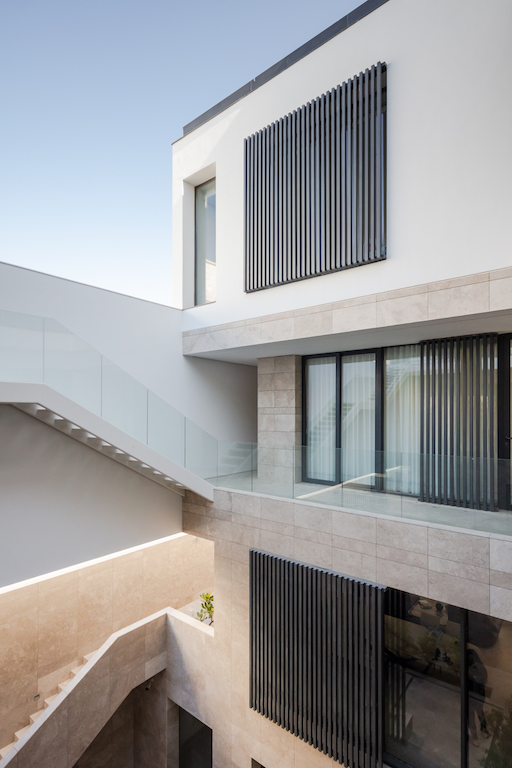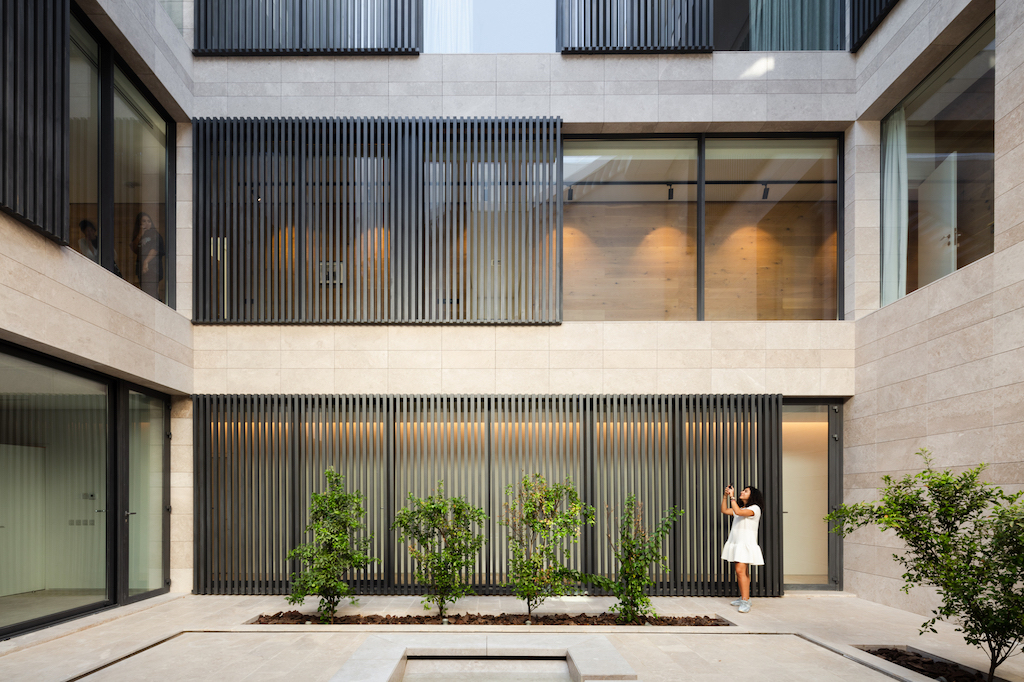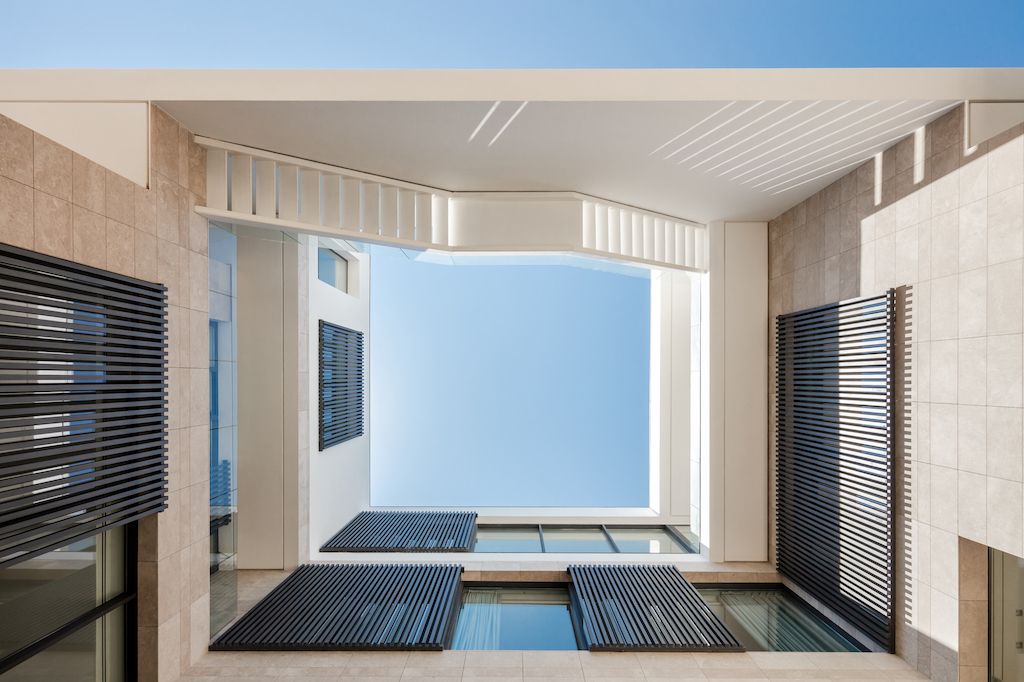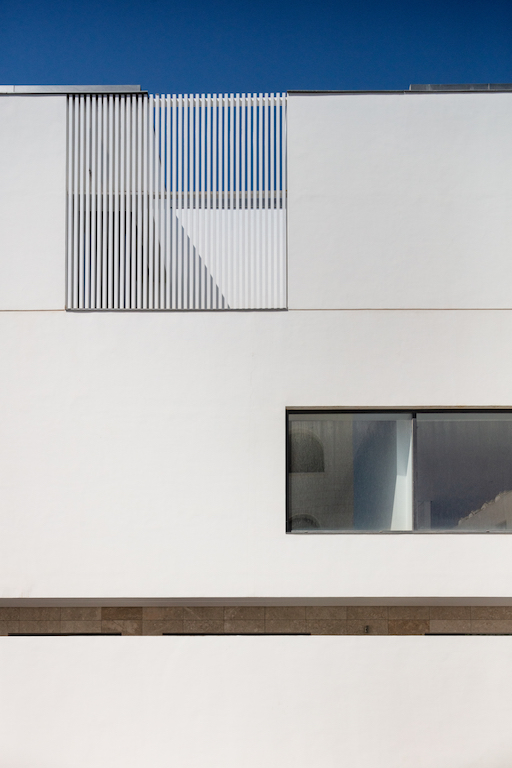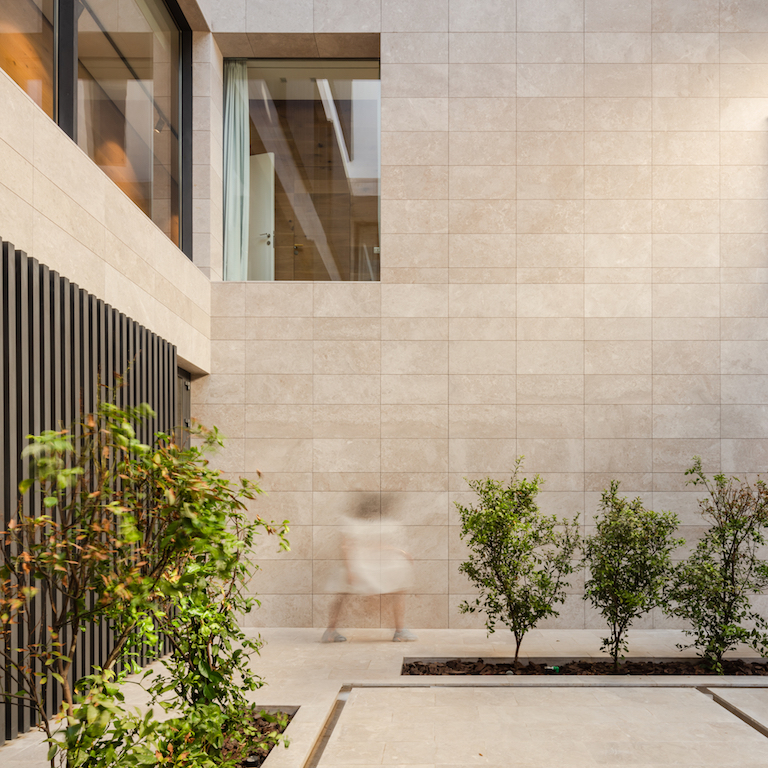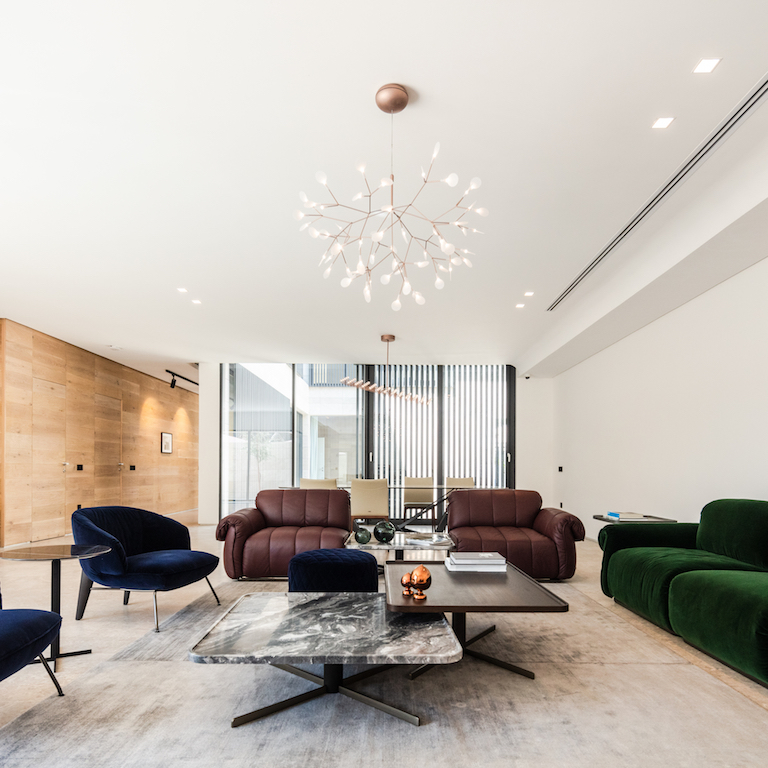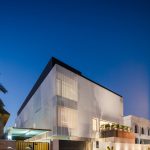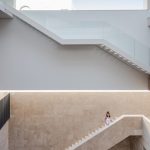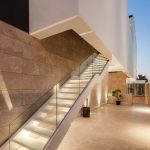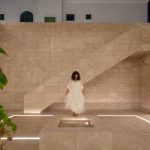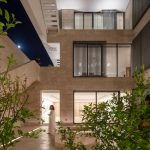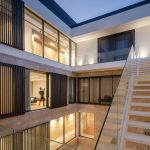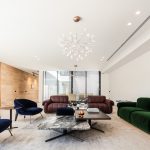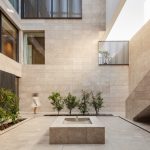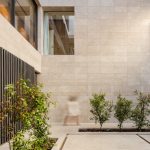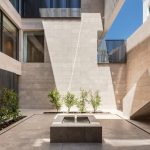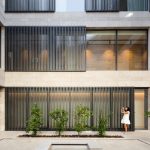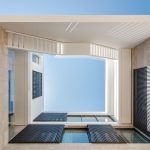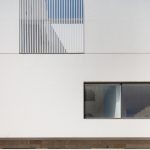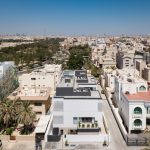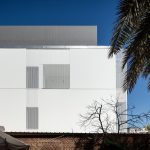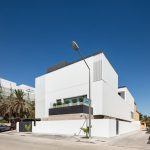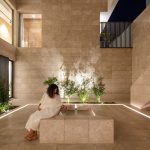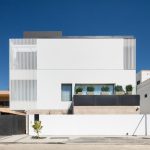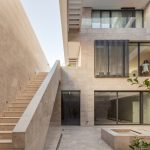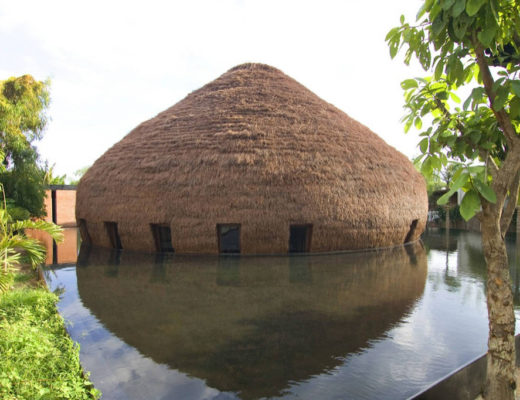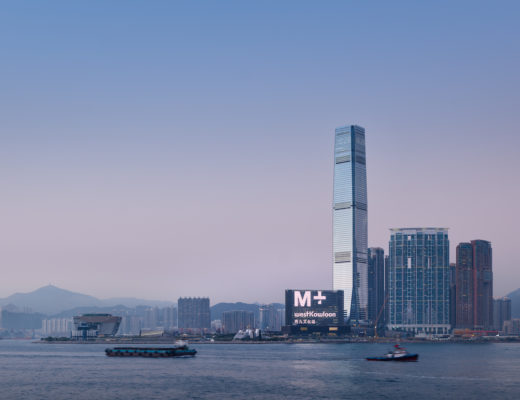Kuwait-based award-winning architecture practice Studio Toggle, founded by Hend Almatrouk and Gijo Paul George was commissioned to design a house in Kuwait City’s Mishref neighbourhood, which mostly comprises of two- and three-storey detached houses. The 1,400m² property sits on a 750m² plot and houses two brothers and their families with their varying lifestyles and needs for privacy and open spaces. Reinterpreting the traditional courtyard house approach, the team of architects working on the project designed an introverted composition of two separate living units grouped around an internal courtyard.
The street-facing facade of the residential property with a basement, ground level and two floors is clean and understated. As a result, the massing manifests as a white monolithic volume poised elegantly on top of a stone-clad podium. The rhythmic arrangement of louvered windows across the façade softens the volume by lending it a sense of lightness.
Socio-cultural norms and extreme climatic conditions provided further basis for the overall design strategy. The demographic is made up mostly of Kuwaitis who value privacy and quietness. The harsh desert sun in one of the hottest cities in the world sees ambient temperatures rise up to 50-degrees Celsius regularly during the summer. Dust storms are also a regular phenomenon that dictates the planning and construction strategies in the area.
A survey of the existing buildings and surroundings revealed a few challenges including that climate-controlled internal spaces are preferred more than open outdoor or semi-outdoor spaces. Maximising the internal built spaces dictates that windows on the perimetric walls become the only source of natural daylight; privacy concerns result in most of these perimetric windows being closed most of the time, resulting in dark and unhealthy interiors; lack of internal social spaces. The task at hand for the design team was to address these concerns and define optimised spatial strategies without escalating the budget which was already substantial at EUR2.2 million.
The house is organised around an internal courtyard cutting across all the floors. The U-shaped volume faces this courtyard in an Omani stone-clad skin. The courtyard and the void results in an inward-looking typology that can benefit from maximum diffused daylight without compromising on privacy. The house, thus, opens up towards the interior featuring a private courtyard lined with citrus trees and a sculptural fountain reminiscent of the gardens from the Moorish Alcazars.
The four-storey courtyard and void presented a question of human scale as well as connectivity between the living units facing each other. A large suspended stair became an open space that sweeps through all the floors, offering vantage points and ease of access.
The interiors of the house features a simple palette of classic white and natural woods. The straight and minimal lines of the massing are offset with the sleek curves of spiral staircases. The furniture is carefully chosen and boldly contrasted against the serene ambiance. The calming sound of the water and the diffused light filtered through the louvered windows provide a tranquil setting in this busy Kuwaiti suburb. Click on the gallery below to see more photos.
Photos: João Morgado


